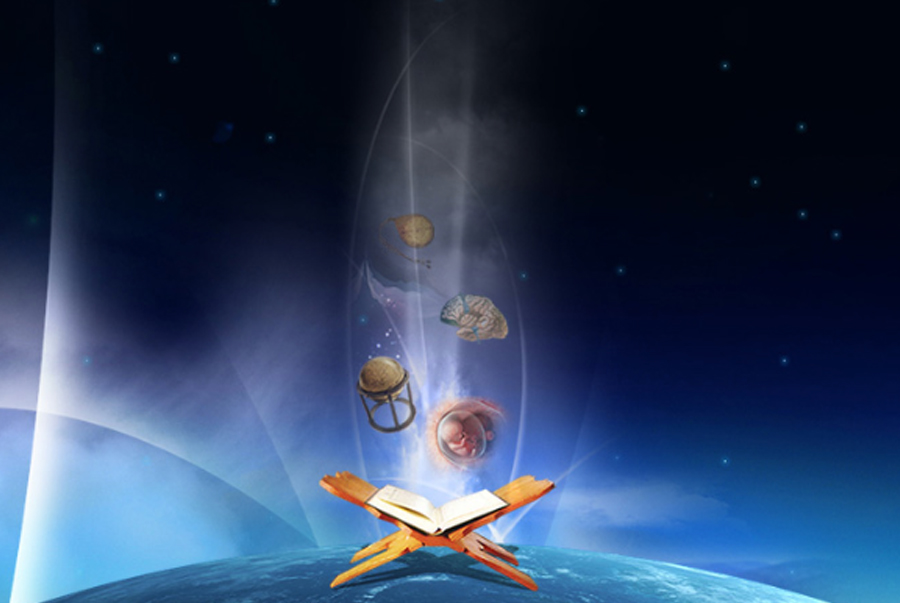Hi readers hope you have enjoyed the article on how Islam has described science? You must also have developed sense of pride by knowing the rich Islamic scientific culture and development that actually became the foundation of the modern sciences especially in the western countries
Did Islam provoke science in Western Europe? is a question that many have been thinking about but without any direct answer, but the “Quotations from Famous Historian of Science” says all this. The explicit answer can also be provided if one can honestly analyze various narration and/or illusions that have been purposely designed to call something to mind without mentioning it which can be used as an indirect or passing reference. So, let’s see what they have been saying over the years and you will get the answer by yourself at the end.
Western writers often used (sarcastically) the words Arabs or Muhammadans for Muslims. They considered them Saracenic (member of any of the nomadic tribes on the Syrian borders of the Roman Empire) and use expression like of Moorish or Hassaniya Arabic (specific ethnic group speaking Hassaniya Arabic who inhabited Mauritania and parts of Algeria, Western Sahara, Tunisia, Morocco, Niger, and Mali and also for Muslims from various parts of Europe, Africa, Arabia and Asia.
So dear readers, you could easily understand the state of mind of the European scientific community of the that “Golden age”. Now to get the answer whether Islam provoked science in Europe? we need to go through what the “Quotations from Famous Historian of Science” says and how some of the historians tributed Islamic science?
(Please be informed that I am reproducing here the quotes as such except some specific words in Hellenic (Greek) language that I have changed to make it easily understandable for the readers to get the actual crux).
In the “Introduction to the history of Science”, George Sarton tributed to Muslim scientists by saying that it will suffice here to evoke a few glorious names without contemporary equivalents in the West:
Jabir Ibn Haiyan,
Al Kindi,
Al Khwarizmi,
Al Fargani,
Al Razi,
Thabit ibn Qurra,
Al-Battani,
Hunain ibn Ishaq,
Al Farabi,
Ibrahim ibn Sinan,
Al-Masudi,
Al-Tabari, Abul Wafa,
Ali Ibn Abbas,
Abul Qasim,
Ibn al-Jazzar,
Al-Biruni,
Ibn Sina,
Ibn Yunus,
Al-Kashi,
Ibn al-Haitham,
Ali Ibn Isa al-Ghazali,
Al Zarqab, and
Omar Khayyam.
A magnificent array of names can go beyond this list which would not be difficult to reproduce here. If anyone tells you that the Middle Ages were scientifically sterile, just quote these names to him, all of whom flourished within a short period, 750 to 1100 A.D.” He also mentioned that,
During the reign of Caliph Al-Mamun, the new learning reached its climax. A regular school for translation equipped with a library was created in Baghdad. Hunayn Ibn Ishaq: a gifted philosopher and physician was a translators there who translated the whole Corpus of Galenic (the collection of writings of Galen: a prominent Greek physician, surgeon and philosopher in the Roman Empire during the second century CE).
Besides the translation, Hunayn made manuals of which pandects is typical of the period of Arabic learning. These are summaries of the whole medicine discussing the linking of the body systematically beginning at the head and working down to the feet.
In the “Intellectual Development of Europe” John William Draper says,
I have to deplore the systematic manner in which the literature of Europe has continued to put out of sight our obligations to the Muhammadans. Surely, they cannot remain to be hidden for longer time. Injustice founded on religious rancour (bitterness) and national conceit cannot be prolonged forever. The Arab has left their intellectual influence on Europe. They have permanently written it on the heavens as anyone may see who reads the names of the stars on a common astronomic globe.
In the “Making of Humanity” Robert Briffault says,
It was under the influence of the “Arabs and Moorish” that revival of culture and not in the 15th century, that a real resurgence took place. Spain, not Italy, was the cradle of the rebirth of Europe. After steadily sinking lower and lower into barbarism, it had reached the darkest depths of ignorance and degradation when cities of the Saracenic world comprising Baghdad, Cairo, Cordoba, and Toledo, were growing centers of civilization and intellectual activity. It was there that the new life arose which was to grow into new phase of human evolution.
Roger Bacon was one of the advocate of Muslim Science and Method to Christian Europe. He never exhausted of declaring that knowledge of Arabic and Arabic Sciences was for his contemporaries: the only way to true knowledge. The experimental method of Arabs was widespread throughout Europe by Bacon’s time hence, discussion as to who was the originator of the experimental method is a colossal misinterpretation of the origins of European civilization.
What we call science arose in Europe was a result of new spirit of enquiry, of new methods of experiment, observation, measurement, of the development of mathematics in a form unknown to the Greeks. That spirit and those methods were introduced into the European world by the Arabs.
(His narration is very long pl., read the actual book)
In the “Legacy of Islam” on Islamic science and medicine, Arnold and Guillaume says,
Looking back, we may say that Islamic medicine and science reflected the light of the Hellenic sun when its day had fled and standout like a moon, illuminating the darkest night of the European middle Ages; that some bright stars lent their own light, and that the moon and stars alike faded at the dawn of a new day: the Resurgence. “Since they had their share in the direction and introduction of that great movement, it may reasonably be claimed that they are with us yet.”
The first mathematical step from the Greek conception of a static universe to the Islamic one of a dynamic universe was made by Al-Khwarizmi, the founder of the modern Algebra.
He enhanced arithmetical character of numbers as finite magnitudes by demonstrating their possibilities as elements of infinite manipulations and investigations of properties and relations.
Khwarizmi’s algebraic symbols for numbers contain within themselves the potentialities of the infinite. Hence, the advancement from arithmetic to algebra implies a step from being (actual) to becoming (attractively suitable) from the Greek universe to the living universe of Islam.
Khwarizmi’s influence reached far beyond the universities. We find it reflected in the mathematical works of Leonardo Fibinacci of Pissa, Master Jacob of Florence, and even of Leonardo da Vinci.
Ibn Sina, known in the West as Avicenna retained his prominence for a thousand years as one of the greatest thinkers and medical scholar in the history. His most important medical works are the Qanun (Canon) and a treatise on Cardiac drugs. The Qanun fi l Tibb is an encyclopedia of medicine containing some of the most illuminating thoughts pertaining to distinction of mediastinitis (inflammation of the chest area between lungs) from pleurisy (inflammation of the sheet-like layers that cover the lungs); contagious nature of phthisis (today’s Tuberculosis); distribution of diseases by water and soil; careful description of skin troubles; of sexual diseases and perversions; and of nervous ailments.
We have reason to believe that when Europe began to establish hospitals, they were inspired by the Arabs of near East.
Ibn Haytham’s tables of corresponding angles of incidence and refraction of light passing from one medium to another show how closely he had approached discovering the law of constancy of ratio of sines, later attributed to Snell (Dutch scientist Willebrørd Snell). He accounted correctly for twilight as due to atmospheric refraction, estimating the sun’s depression to be 19 degrees below the horizon, at the commencement of the phenomenon in the mornings or at its termination in the evenings.
One of the leading Muslim Historians Al Mas’udi by tenth century wrote thirty volumes on “Meadows of Gold and Mines of Gems” containing geographical, historical and scientific knowledge.
The most prominent geographical work was of Mujam Al Buldan that was compiled into a dictionary by Al Hamami. This is a veritable encyclopedia going far beyond the confines of geography incorporating great deal of scientific wisdom.
Ibn Al Baitar compiled the most elaborate Arabic work on the subject of Botany for the whole period extending from Dioscorides (First century Greek physician, botanist and pharmacologist whose encyclopedia of Materia Medica was used for centuries after his death) down to the sixteenth century. It was a true encyclopedia on the subject.
Abd Al-Malik Ibn Quraib al Asmai was a pious Arab who wrote valuable books on human anatomy. Al Jawaliqi Abd al Mumin wrote treatises on horses. The greatest zoologist amongst the Arabs was al Damiri of Egypt whose book on animal life, Hayat al Hayawan has been translated into English by A.S.G. Jayakar.
The weight of respected authority, for example that of Ptolemy (Alexandrian astronomer who proposed a geocentric system of astronomy) seldom intimidated Muslim scientists. They always put a theory to tests, and they never tired of experimentation. Though motivated and permeated by the spirit of their religion, they would not allow dogma as interpreted by the orthodox to stand in the way of their scientific research.
That’s all for now dear readers. See you next week with a new phase of Science and Islam. Till then, enjoy reading this, like it and share it,
Bye.






2 Comments
yourkinkinpink.com
February 28, 2023 at 10:02 pmYou should be a part of a contest for one of the highest quality websites on the net. I am going to highly recommend this website!
shafqat
March 4, 2023 at 10:17 amThank you so much